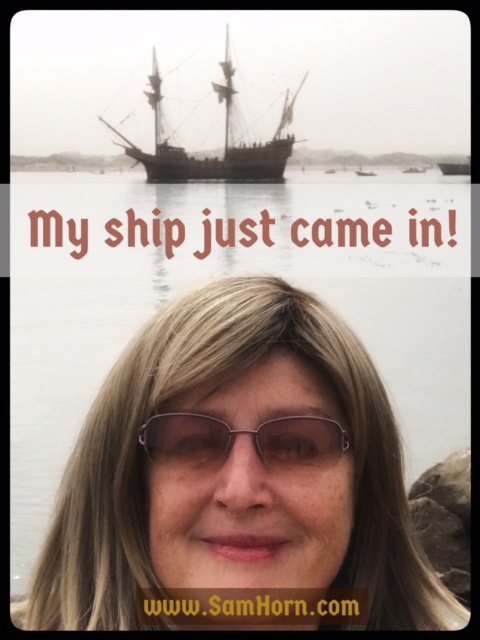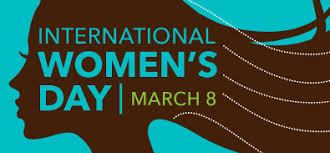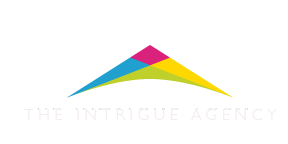I was in California recently to speak for the Central Coast Writers Conference. The day before my presentations, I headed to Morro Rock for an early morning walk. As I explored the waterfront, watching the playful otters float and nurse their babies on their bellies, I noticed some people gathered on the shore, eagerly gazing out toward the mouth of the bay.
Curious, I walked over and asked, “What’s going on?”

The man closest to me said, “Oh, the San Salvador is arriving this morning.”
“What’s the San Salvador?”
“It’s a fully-rigged replica of the Spanish galleon - Cabrillo's flag ship - that discovered California. It should be here any minute.”
What a serendipitous discovery. To put this into context, every morning I listen to Colin Hay’s “Waiting For My Real Life to Begin” with its haunting lyrics about how many of us wait for our ship to come in. It’s a way to remind myself THIS is my real life and it’s up to me to create what I want - not wait for it to show up.
So, I walked to the point, peering through what the locals like to call a "marine layer" for my first glimpse of the ship. There it was emerging from the fog. A magnificent sight. I laughed as this thought occurred, “My ship just came in!”
This story doesn't stop there. In fact, it just keeps getting better and better.
The next day I closed my conference keynote with the story of that special moment watching the San Salvador sail into the harbor. I added though that:
“Writers don’t wait for their ship to come in; they write their way out to it.
In fact, entrepreneurs – and writers are creative entrepreneurs - launch their ship. At their core, they’re designed and destined to explore. They set sail with their ideas and stories. They do not wait for perfect conditions. They know the value is in the voyage. They understand discoveries don’t happen in inertia. Setting a vision in motion is what makes it tangible which is where you reap the rewards. Writers understand it's crucial to maintain confidence in their creative venture. Their role, their responsibility, is to launch … always to launch.”
Well, as soon as I launched that story, rewards started showing up.
A woman came up after my keynote and said, “Sam, my brother in law is actually in charge of the San Salvador Project. I’m sure he’d be glad to give you a tour.” Which is how I found myself interviewing Captain Ray Ashley below decks on the San Salvador the following day.
I hope you’re ready, because you cannot make up the stuff you’re about to read. You know what I've learned about stories? Fact is more fascinating than fiction.
What Captain Ray Ashley told me is a quintessential example of what can happen when we get an idea - and the facts indicate this can’t work and the finances aren’t there – but we choose to launch anyway.
This true story proves that if we keep the faith that what we're trying to build is worthwhile - mini-miracles can unfold if we set our project in motion and give community an opportunity to jump onboard.
Here’s what happened.
The San Diego Maritime Museum originated the idea of creating the San Salvador and asked Ray to head up the project. Ray told me, “As a historian, I know it’s important for origin stories to be associated with a physical object. As soon you turn something conceptual into something concrete (think European immigration to America and the Mayflower); people are more likely to relate to it.
So, we thought the discovery of California (by the Spanish, multiple Native American tribes already lived here) would become even more ‘real’ and relevant if we built a working replica of the ship people could see, touch and walk on.”
The only problem? Their research estimated it would cost $6.2 million to build the ship. The entire annual operating budget of the San Diego Maritime Museum was $4.6 million. So, on paper, the facts and finances didn't add up. Logically, it didn’t make sense to launch the project.
Thankfully, Ray said, the people in San Diego believed this project was worth doing and the project was approved. It was poartially due to that incredibly supportive community that the project team made a crucial decision that directly led to the success of their venture.
They decided to build the ship in PUBLIC instead of in PRIVATE.
Ray told me, “If you operate in isolation, if you're the only one providing the energy, ideas and vision; sometimes that’s not enough. But if you construct a project in public, well, people see what you're doing and want to get on board. They’re eager to be part of something they can be proud of.
We arranged for the San Salvador to be built in plain sight, right next to a busy freeway. Within weeks, we had 50 volunteers showing up every single day.
These were ‘lay-people’ saying, ‘Put me to work. How can I help?’ and skilled craftsmen - nuclear physicists, shipwrights, architects - offering their years of valuable experience and expertise.
It was a blessing to have such an incredible team of individuals dedicated to making the project a success. And we needed those volunteers because they helped us persevere through one obstacle after another.
For example, our research showed there was only one wood strong enough and dense enough to carry the weight of this ship, and that was white oak.
The challenge is, there’s not much white oak left. We finally found a supplier and, imagine this, bought up the entire world’s supply of white oak.
Now, no tree grows in the shape of a ship. It took us months to mill the wood into the curves of the hull and sides. When that was done, we applied epoxy to about half the wood to make it waterproof. The only problem was, the epoxy was contaminated. Within 48 hours, the wood had started to curl and rot and was basically unusable. As you can imagine, we were devastated.
Thank heaven for the volunteers. When we told them what happened, one said, “You know, you should call this guy Jim who’s kind of an expert on living oak. It’s not white oak, but it’s close. You never know. Might as well check it out.”
Ray contacted Jim, and sure enough, living oak used to be protected but now it’s overgrown and Jim was able to supply them with enough wood to meet their needs … at a price they could afford.
Good news, right? Yes, but it was only a matter of time before they ran into another seemingly insurmountable obstacle.
It was time to embed lead into the hull to provide the necessary ballast, but the price of lead had skyrocketed and they could no longer afford it. So, they launched a creative “Get the Lead Out” campaign and invited people to donate any lead they might have lying around.
Ray said, “People were coming in with their fish weights, etc. We really appreciated what they were doing, but it would take decades to accumulate the amount of lead we needed, a few ounces at a time.
We felt we had run into a dead-end. Once again, our volunteers saved the day. One said, ‘You know, I used to work for this contractor out in the valley that went out of business. I think they used lead for some of their projects. Maybe they still have some left on their property.’
Captain Ray got in touch and explained his situation to the executive. He said, “Well, let me look around and I’ll get back to you.”
The next day he calls Ray and says, “How much lead do you need?”
Ray says, “180,000 pounds.” The guy chuckles and says, “Well, I’ve got 190,000 pounds of lead and you can have it all.”
Fast forward. The ship is almost ready to launch. The challenge now is they have to get this heavy ship from the boatyard across the highway into the water. The problem is, they’re almost out of money and can’t afford to build what will need to be a steel bridge with rollers to transfer the ship.
Once again, their volunteers come to the rescue.
One says, “Well, I have a colleague who owns a home-moving business. I don’t know if he can help but he definitely knows a lot about transporting heavy objects from one place to another. Why don’t you give him a call?”
To make a long story somewhat less long, suffice it to say, this individual had wanted to upgrade his capacity to move heavy equipment like cranes, so he offered to build the steel bridge for the San Salvador - for free - so he could offer this option to his future clients. Another "insurmountable" obstacle surmounted.
If you’ve ever built something, you know that every contractor uses an operational formula called the TCQ – Time, Cost, Quality - Triangle.
Essentially, it states that if you are willing to pay more money, you can increase quality and reduce time. If you don’t have much money, you may have to cut corners on quality. If you take more time, you can increase quality, but it will also increase costs. These three factors are always interacting, always in play.
However, one rule that is almost sacrosanct in the contracting-building-construction-project management industry is that the longer it takes to build something, the more it’s going to cost.
Guess what?
The San Salvador took three times longer than anticipated to build - and came in only a little over its original budget.
How can that be??
Well, I told Captain Ray I think he and the San Salvador team added a side to the TCQ triangle and turned it into a TCQC rectangle.
I think they proved that if you go public with your venture, if you ask for help and give people ways to contribute - they can actually reduce costs because they're using their six-degrees-of-separation to connect you with people who can supply your provisions, remove your obstacles and solve your problems.
The San Salvador team demonstrated the mini-miracles that emerge when we build projects with a TCQC - Time Cost Quality Community - Rectangle.
When you involve your community, they bring so much to the table in terms of experience, expertise, energy and strategic alliances, you ultimately reduce costs and time. Perhaps more importantly, you improve the quality of the experience for everyone involved and you scale the reach and positive impact of your venture.
When I visited Captain Ray that day in Morro Bay, there were lines of an hour or two to tour the San Salvador. People had traveled from around the country to see, touch and walk around the ship.
Ray said, “That was our vision and it’s enormously rewarding to see it come true. We gave donors and volunteers an opportunity to hammer their initials into the keel. We’ve had dozens of families show up where the dad or mom or grandparent proudly pointed out the part of the ship they worked on.
They feel like they're part of the story. They love telling the story of the ship they ‘helped build.’ They're so proud to be able to put their hands on something they helped bring into being.”
As I wrapped up my time with Ray, I couldn’t help but reflect on the many ways the San Salvador project is a perfect metaphor for my Year by the Water project.
I too launched a venture when the "numbers" weren’t there. I didn’t have a financial sponsor for this trip. If I had focused only on the logical aspects of this venture, (e.g., “Give away 95% of what I own? Set off into the unknown?!”) it didn’t add up, didn't make sense … on the surface.
But deep down, I knew this was important, what I wanted to do. I too wanted to explore our magnificent country. I too wanted to travel on and visit bodies of water. I too had faith this project would be meaningful for me and others. I too had to maintain my confidence this venture was worth doing – even when there were no guarantees.
I too went public and experienced an outpouring of support. I received gracious emails from my community saying, “Come to this lake where Helen Keller said her first word, ‘Water.” “I live near Walden’s Pond, come visit me.” “You can stay in our vacation home on Chesapeake Bay.” “Hang out on my houseboat in Sausalito.” “I have a Frank Lloyd Wright-inspired cabin in Pt. Reyes National Seashore. You can write there.”
And I'm here to tell you, a year after launching my “ship,” that the secret sauce of a successful project is indeed … COMMUNITY.
Yes, I’ve enjoyed the many places I’ve had the opportunity to experience. Yet it’s the people I’ve connected with who have made this adventure even more meaningful, even more of a QUALITY experience in every sense of the word.
How about you? What is the project you want to build, the creative venture you want to launch, the dream you want to achieve?
If you juxtapose it, if you put a vertical line down the center of a piece of paper, there may be some fears on the left side. Maybe the numbers don’t add up. If you consider only the facts, figures, left-brain logic, it may not “make sense” to head off into the unknown where there are no guarantees. As long as you stay focused on the left-side of the ledger, your project will stay in the boatyard.
However, if you switch over to the right side of the ledger and focus on your faith that this creative project has value, your belief this adventure is worth doing, the meaning it might have for you and others… it will help give you the confidence and courage to set your creative vision in motion.
When you do, be sure to go public. Tell people what you're doing. Share your vision. Invite their input. Ask for their contributions. Enlisting your community adds an all-important ingredient to the equation.
A project that may have been unfeasible because it was dependent on the TCQ Triangle is now feasible because you’re adding the secret sauce of community.
You have just exponentially increased your odds of success because you won’t be operating in isolation, you won’t just be doing this for and by yourself.
You will have a TCQC - Time Cost Quality Community - Rectangle that is leveraging a group of people who are doing everything in their power to help you move your project forward because they are invested in its success.
And isn’t that what we want? Not just a meaningful, productive life where we're fulfilling our SerenDestiny and have the lights on in our eyes, but to have the privilege and opportunity to share what we care about with other people who care about the same things?
What is it you want to do? Launch it.

- - -
Sam Horn, Founder and CEO of the INTRIGUE AGENCY, helps people create respectful, collaborative one-of-a-kind communications and projects that add value for all involved. Her inspiring TEDx talk and keynotes receive rave reviews from such clients as National Geographic, Intel, Cisco, Capital One, NASA, Accenture and Boeing. Her work - including POP!, Tongue Fu!, and Washington Post bestseller Got Your Attention? - have been featured in New York Times, Forbes, Fast Company and NPR and MSNBC.
Want more ways to lead a creatively productive life? Read Sam's inspiring Year by the Water updates at SERENDESTINY




